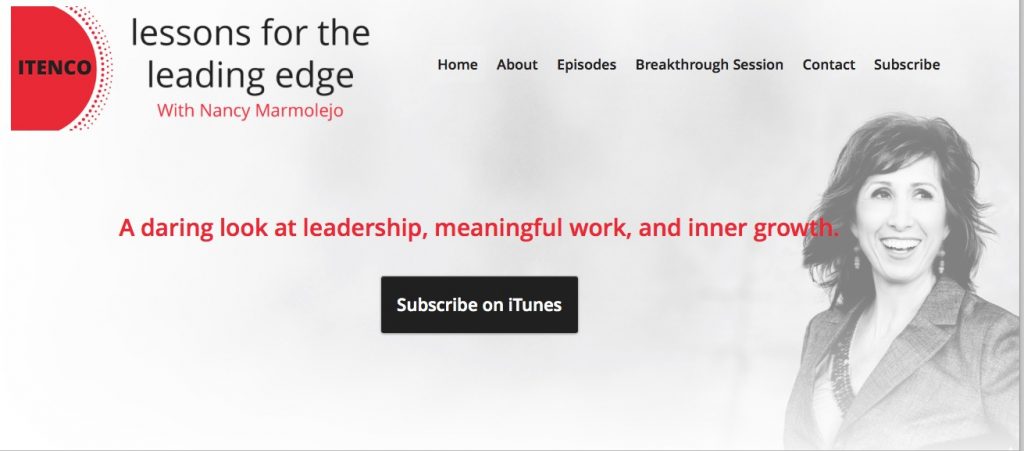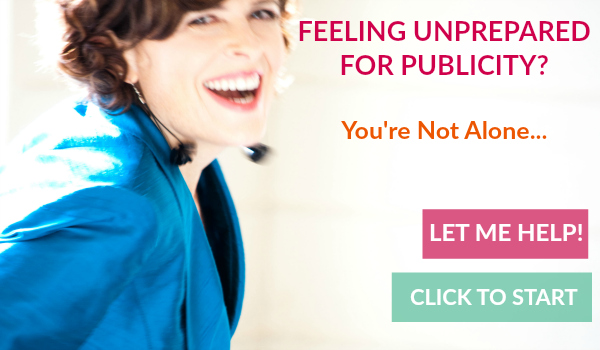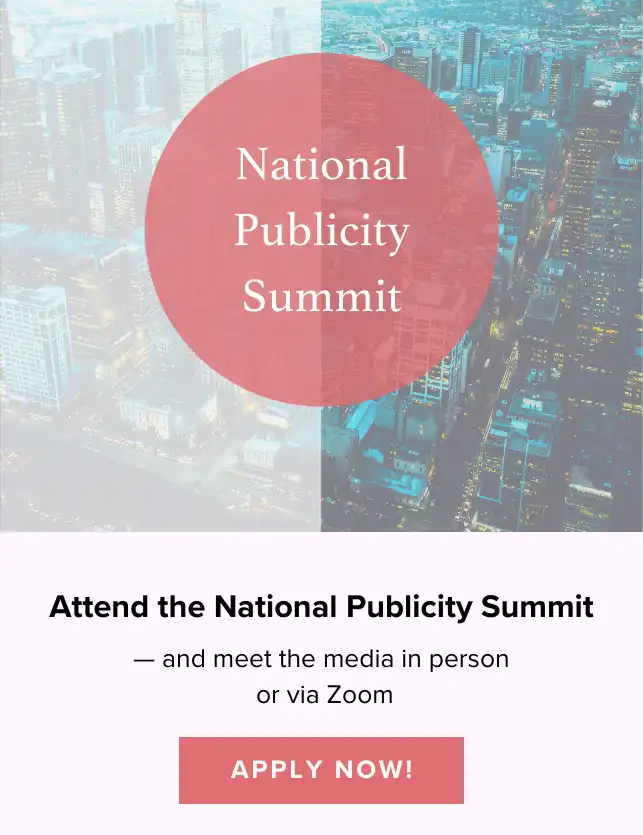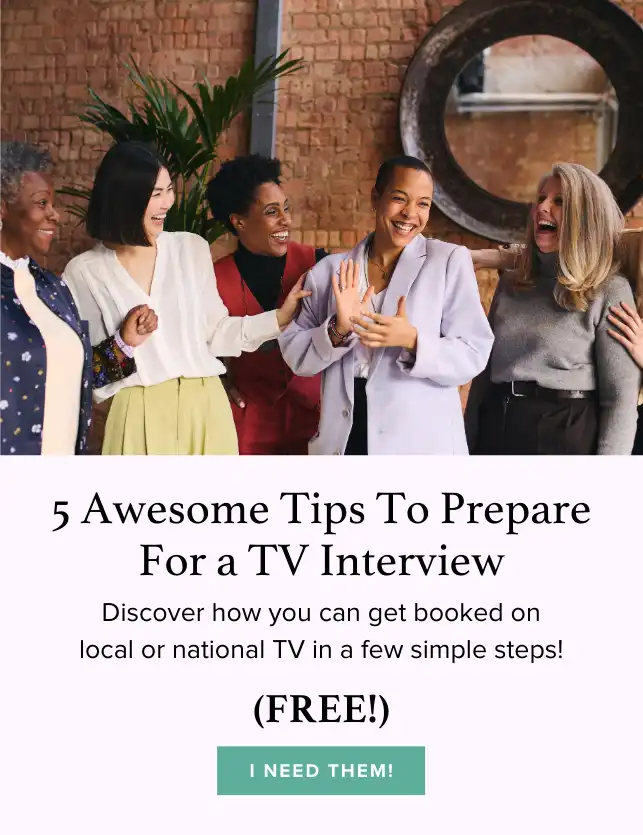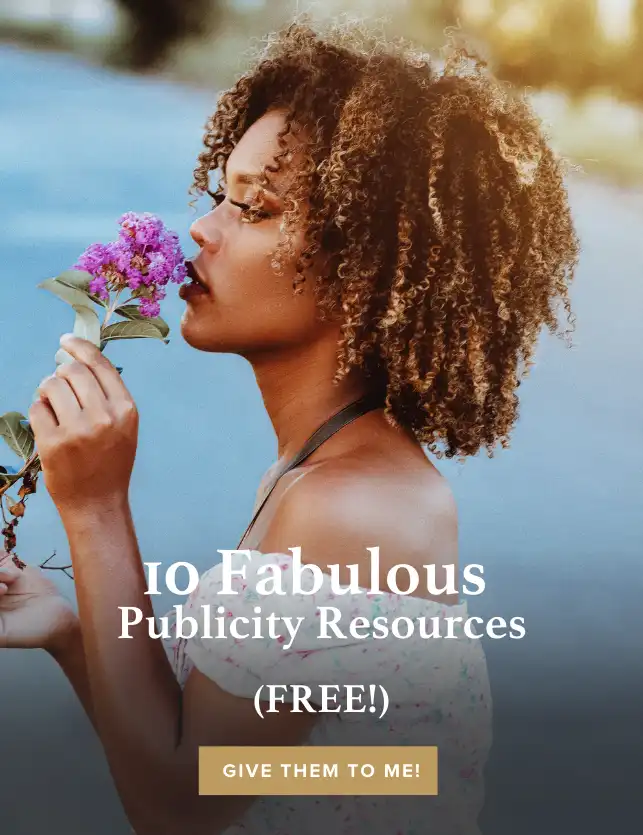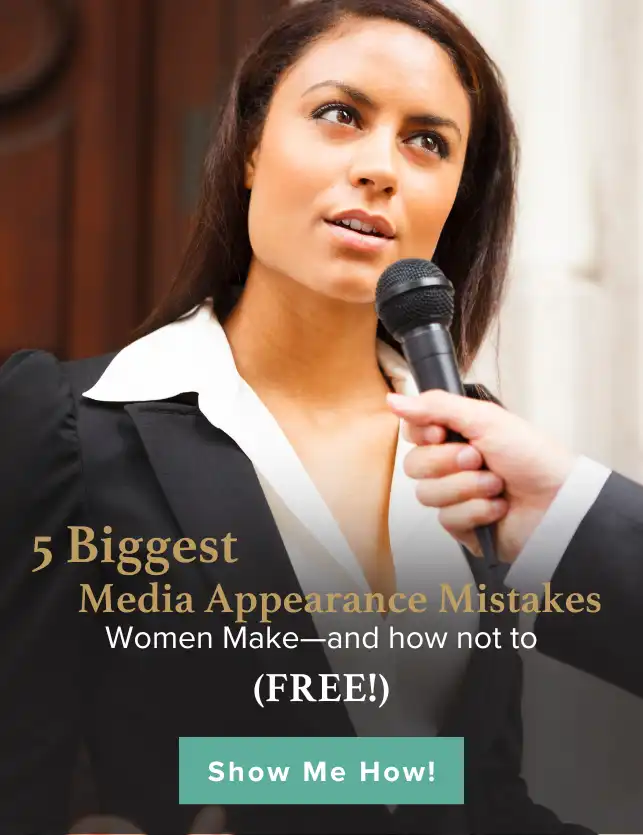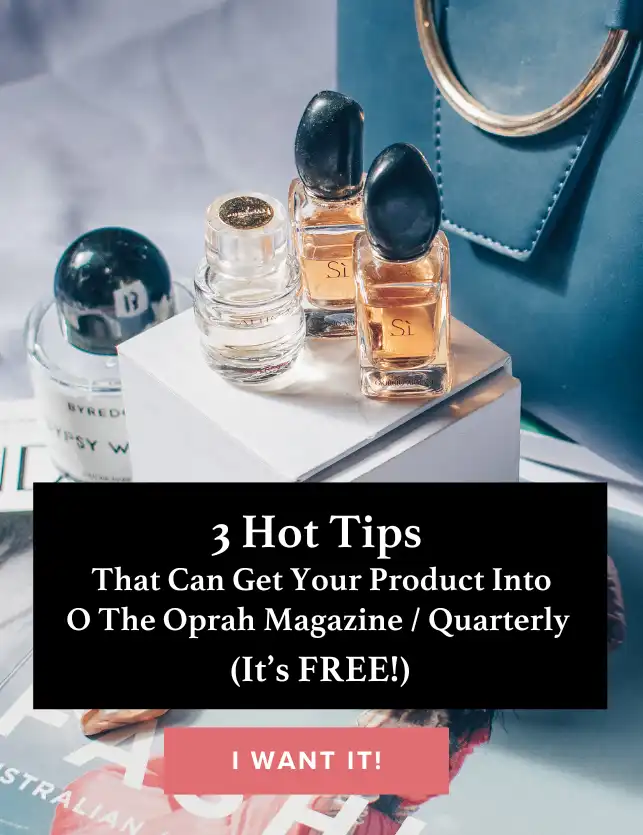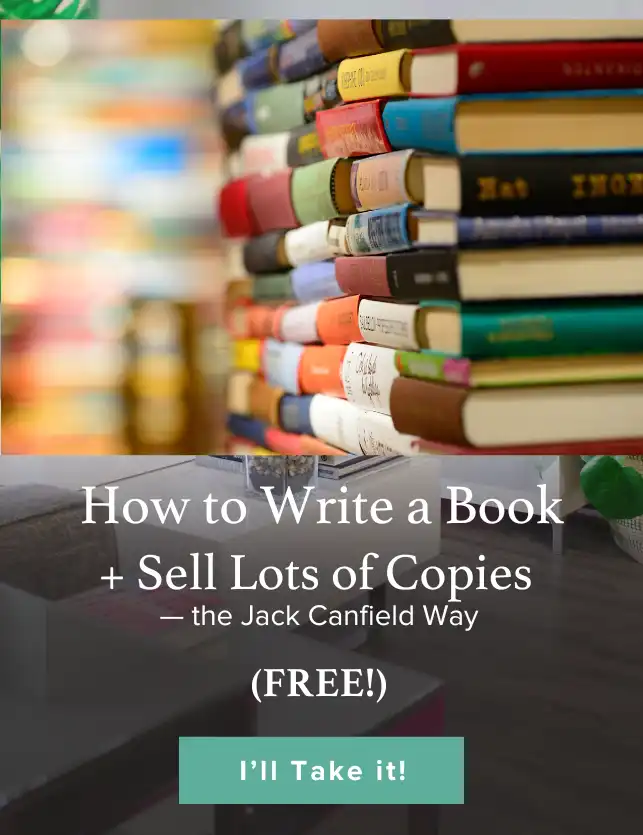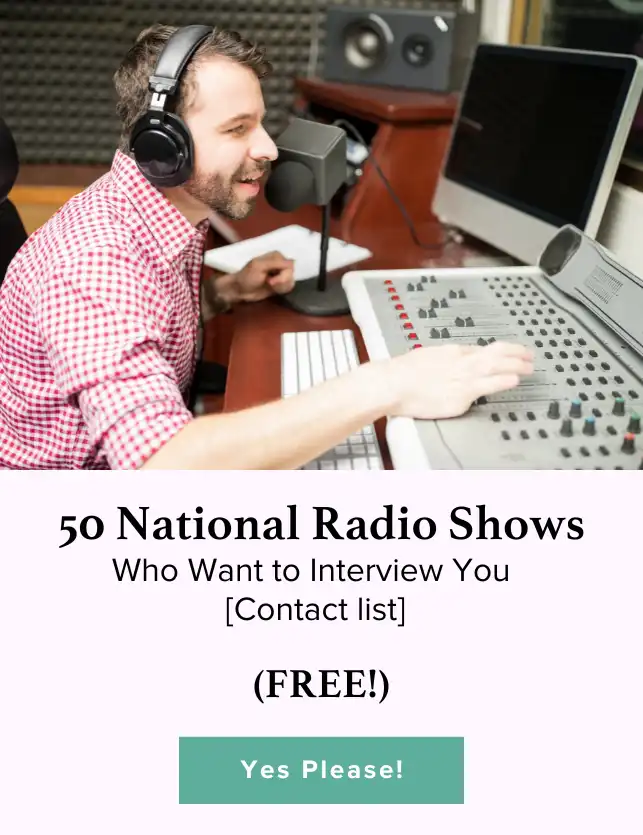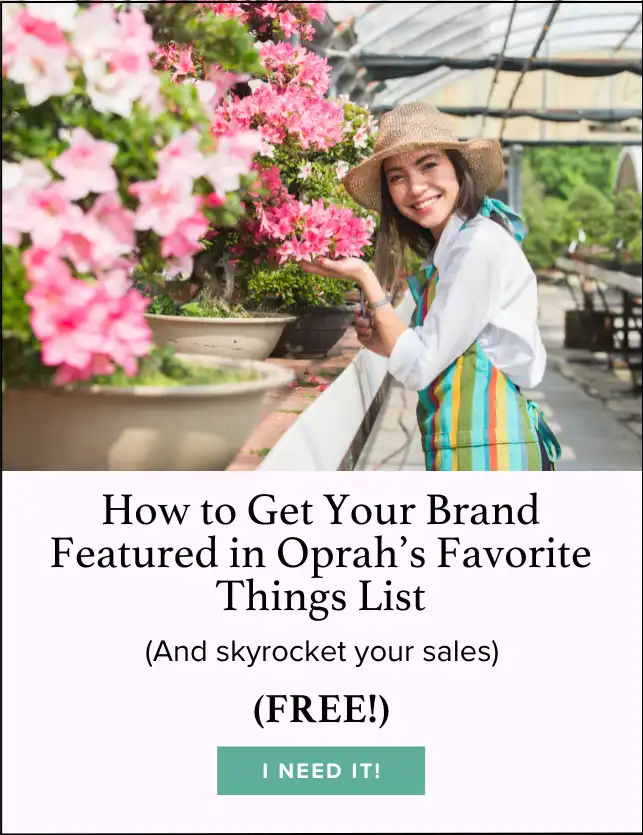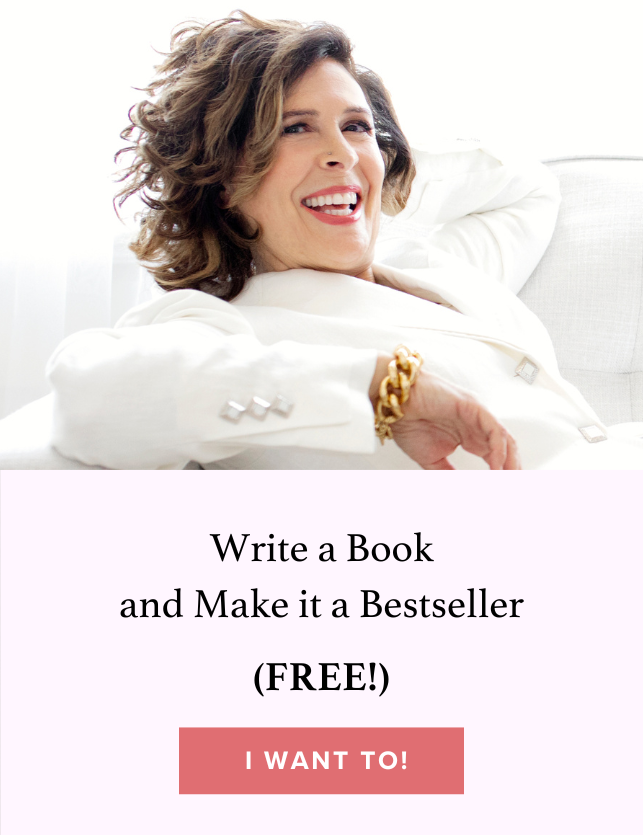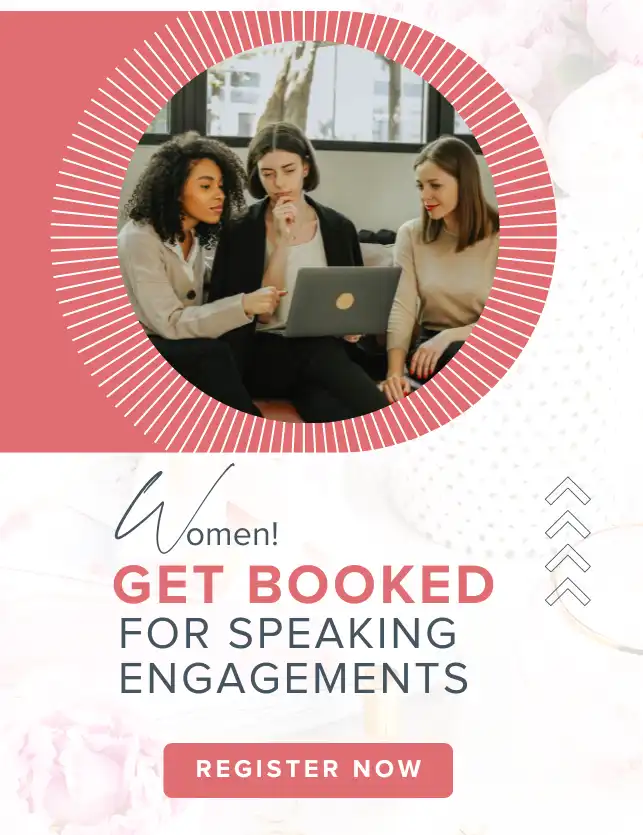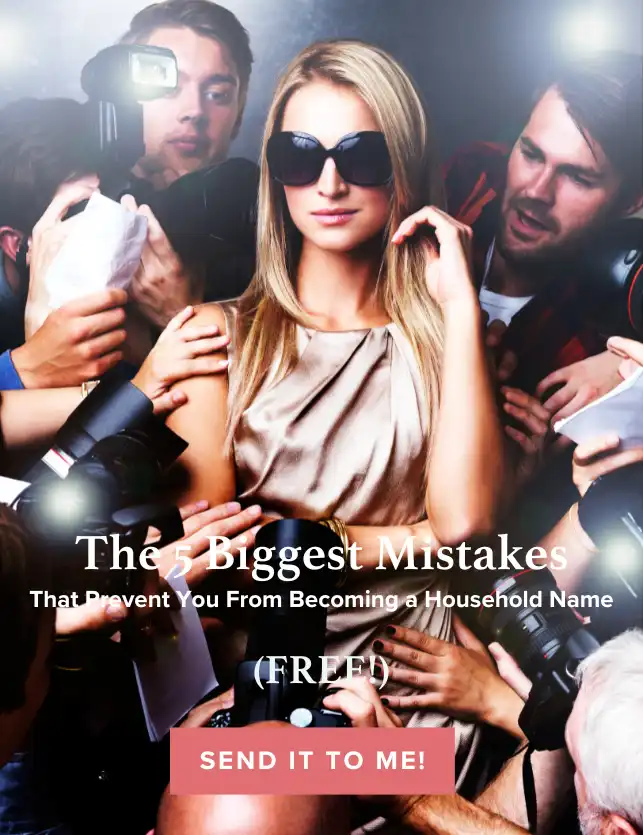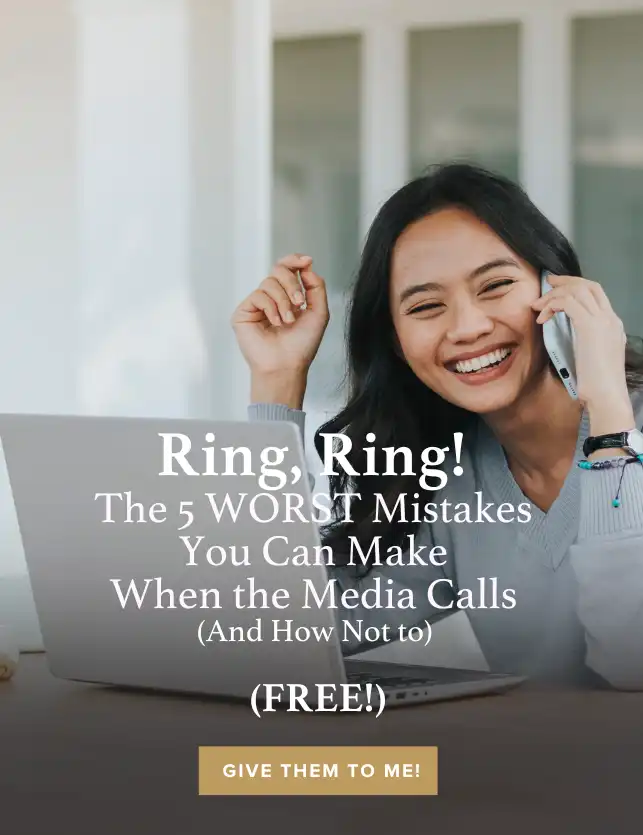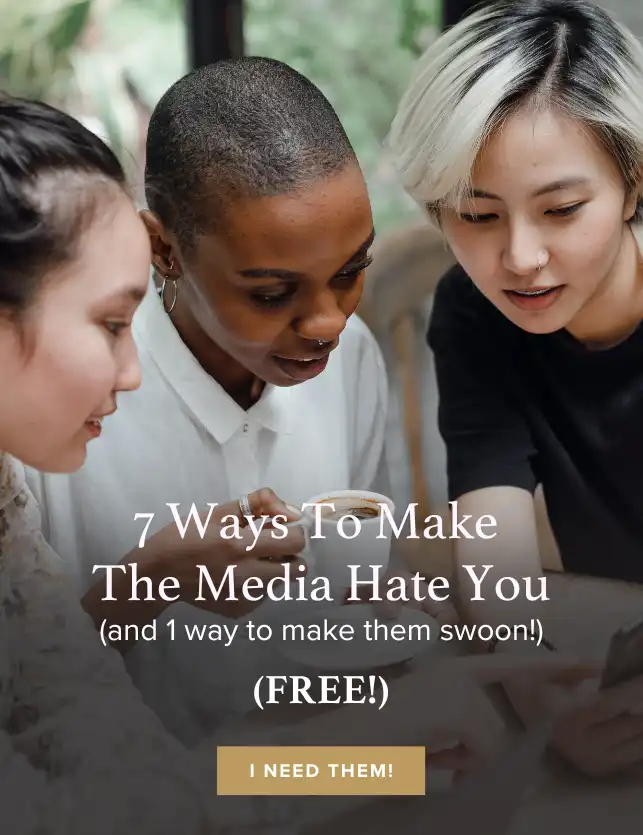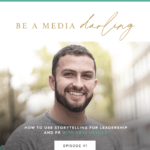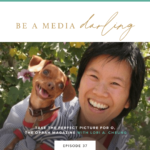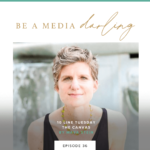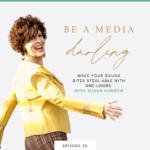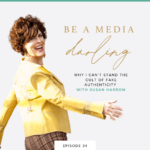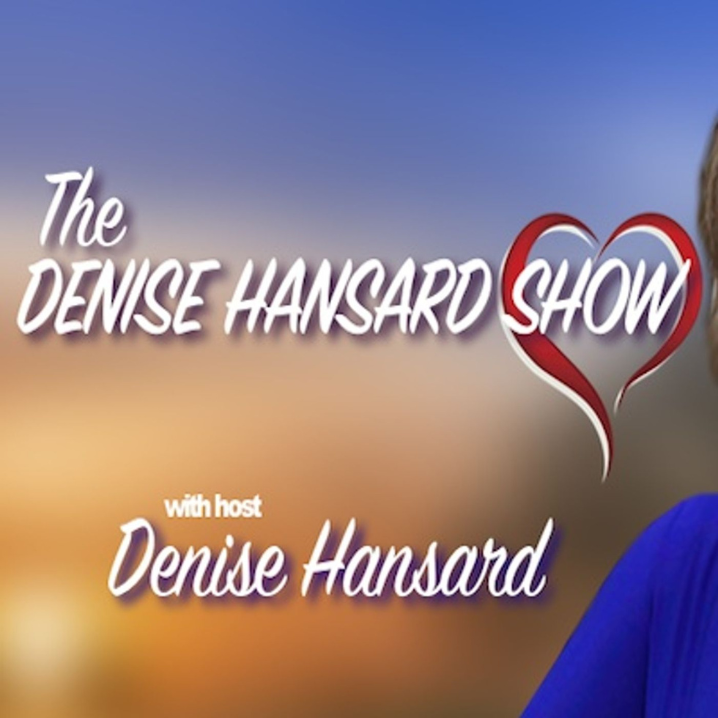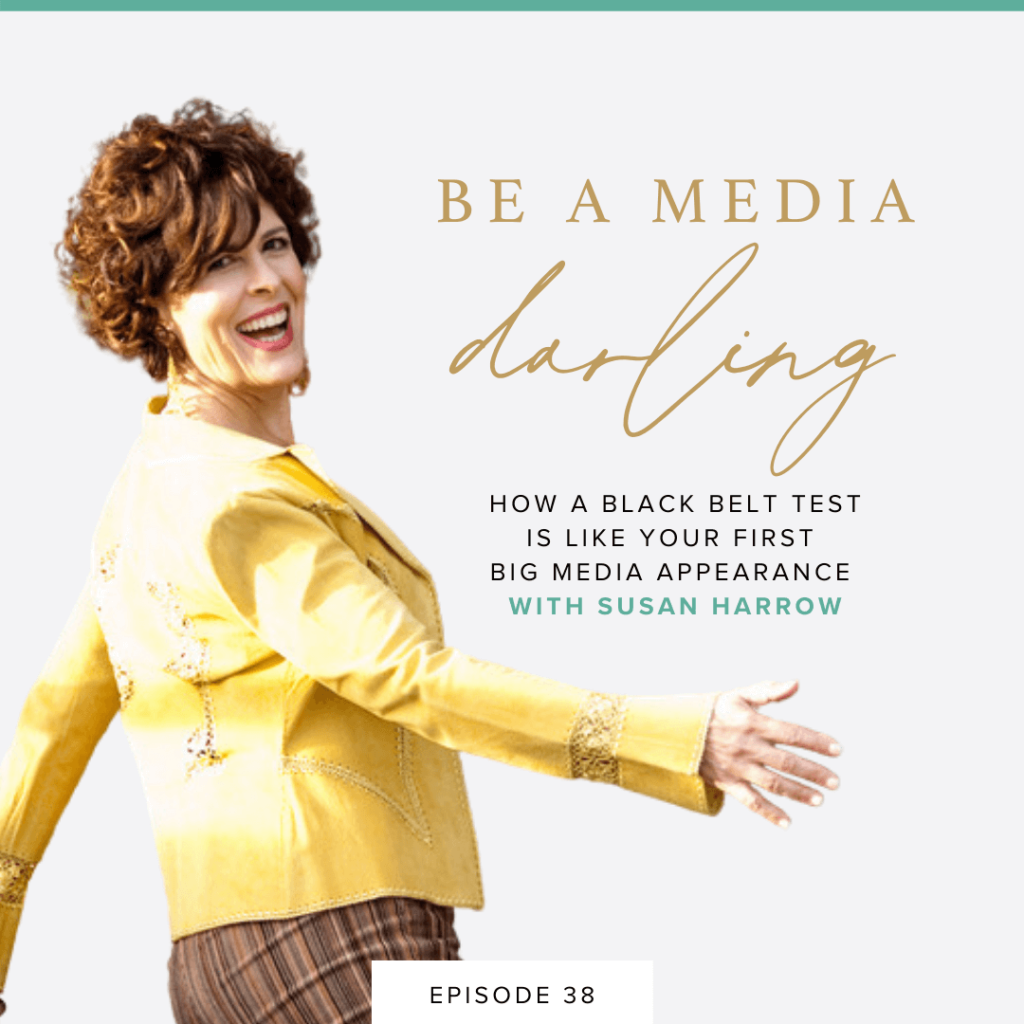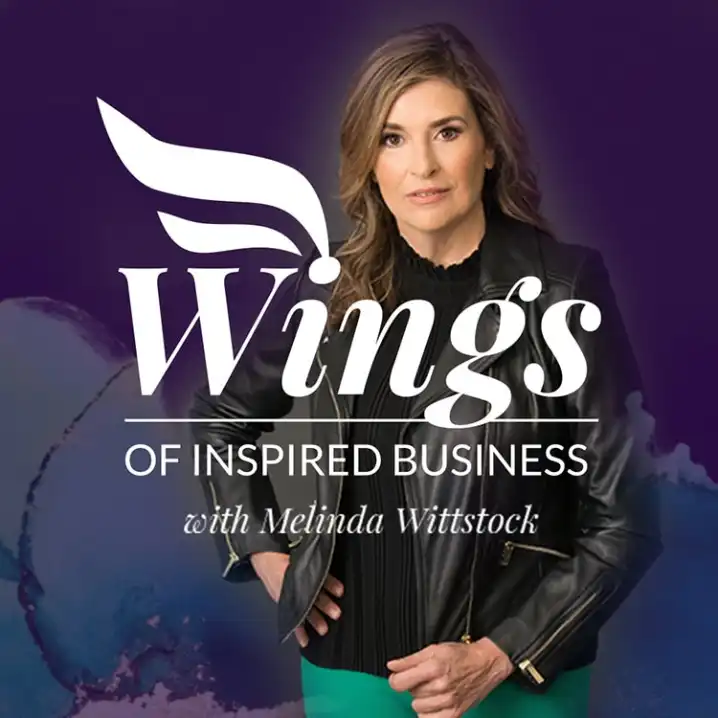Close High End Clients on Facebook Without Ads With Nancy Marmolejo
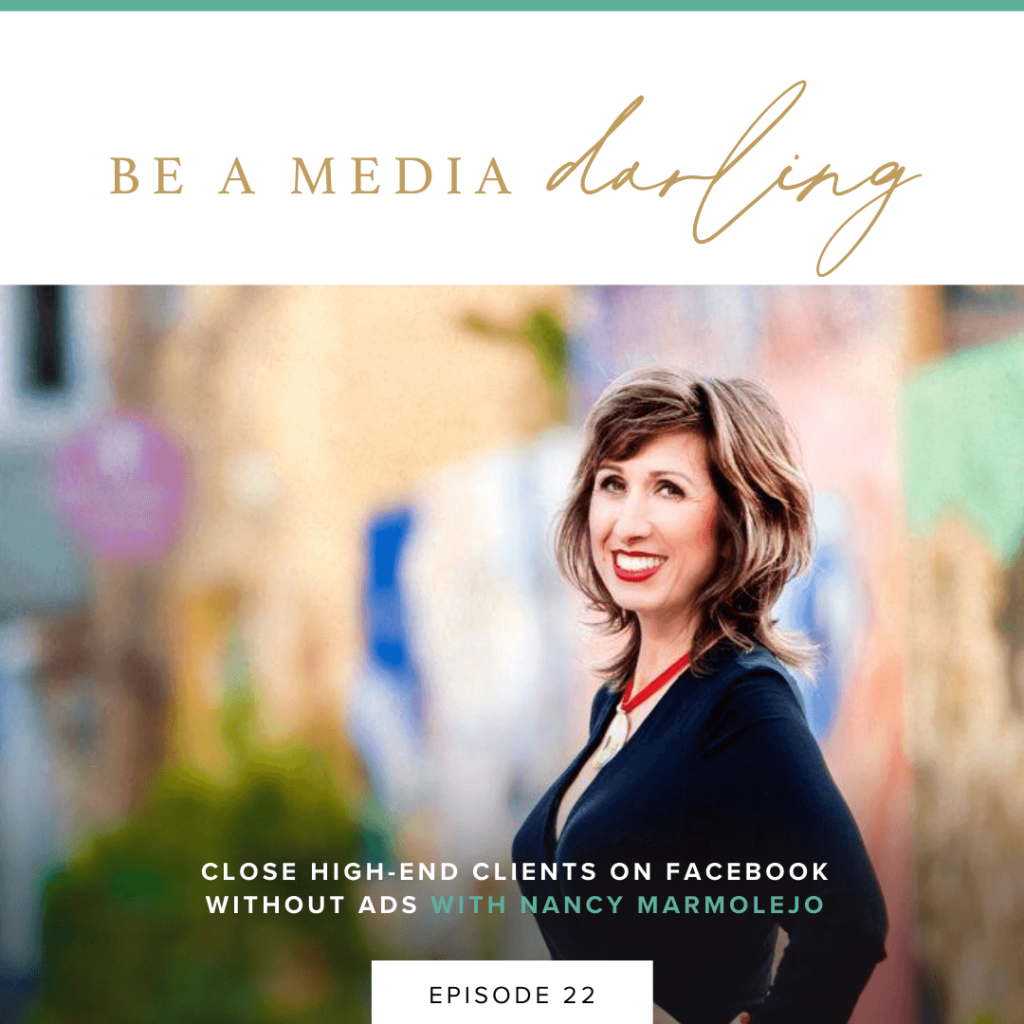
Are you enjoying the Podcast? Then I invite you to hop on over to iTunes to subscribe, rate + review it. Here’s a quick video on how to do a podcast review on iTunes. (It’s simple if you follow these directions). Note: It can take up to 24 hours to show up on my Podcast. You’re welcome to send this to anyone you think it would delight. May good fortune always follow you!
Want to know how to subscribe on your phone? Watch this video.
Want to be a guest on my Podcast? Jet me an email with your topic and a link to your bio here.
Send Susan a Voice Message!
Click below to send me your voice message with a question or topic you’d like to hear more about in my upcoming podcasts! I will answer the most pressing and popular ones in a future episode. (I’ll mention your first name ONLY to protect your privacy.)
Close High End Clients on Facebook Without Ads With Nancy Marmolejo
Today, our guest is Nancy Marmolejo. Nancy is on today because she and I had such a great conversation the other day about Facebook and posting on Facebook to close high end clients. Nancy has got such a unique system that I wanted to bring her on to talk about it, to share because it’s not like anything else out there. She’s going against the grain, which I really love. It’s counter-intuitive almost, in a way. I think you’re going to talk about why it is more intuitive; it’s counter-intuitive and intuitive. You can reach Nancy at http://talentandgenius.com.
I’m so happy to have you on today, Nancy, and that we reconnected. I love this topic because so many people have very strong ideas about what works. Certain things work for certain people very well. Everyone has a system. You have a system that’s very unique. First, Facebook is always changing. Tell us a little about how Facebook has changed and why our fan page posts aren’t getting to our people like they used to. I know their focus now is really on advertising for Facebook posts. We can have as little as 20 to 50 people seeing an organic post because of this on a fan page.
That’s the truth. Facebook just has realized that they could be making a whole lot more money if they hold your traffic hostage and you have to pay to get people to your page. Unfortunately, fan pages haven’t been growing organically. People have to buy traffic through advertising to get it over there. A lot of people who used to really talk a lot about fan pages and building your fan page, they’ve quieted down recently.
A lot of people are just shifting to the engagement that you can have on your personal profile. Even if you’ve maxed out the 5,000 people you can be friends with, you can still have people follow you. They’ll get your notifications, they can comment. That’s something that didn’t exist a few years ago. It used to be, once you reached your max, you reached your max. You couldn’t do anymore.
There’s a lot more that can happen now on the personal profile. I’m just really happy about that because it saves you having to juggle so much time between the fan page and your profile.
What do you mean by the personal profile? You can only have 5,000 people as friends. What do you mean by people can still follow you? Will they still see your feed, anything that posts into your feed the same way that your friends would?
Yeah, basically they would. They’ll see things in your feed, they’ll be able to comment. They’ll be able to interact with you.
Then what’s the difference between being a friend and being a follower?
The intricacies of Facebook and how all of those little components work aren’t necessarily things that I keep up on. I just know that they can interact with you and follow you. I’m not the best source to give you all the delineations of Facebook intricacies. I’m an engagement person. I’m about the relationships and the engagements. I try to keep my head out of some of the nittier grittier stuff because what I’m doing is really going in the face of all the technical stuff and just putting a more human touch on things.

I love that because so many people are about the numbers and the numbers only. I think that if you are just a numbers only person, you’ve got a different philosophy than [Nancy does]. I know there are definitely people out there like that, who would claim that they’re about engagement but they’re really more about the numbers. You’re doing something that I found that was wildly different than most people and most of the top marketers on Facebook. Tell us a little bit about this new strategy that you’ve discovered and developed yourself.
What’s great about it is it’s not super new. It’s something that naturally and intuitively I’ve done for a number of years. That’s what’s kind of cool. What’s interesting is, it does tie in to numbers and metrics. As I explain, it will be a little bit more clear. It’s just this really intense focus on engagement. The type of engagement that’s not tricking people into clicking like. “If you don’t share this or click or like, bad things will happen to you.” Those kinds of status updates that people … They put these pictures of, “Share this or you’ll have bad luck,” like a chain letter.
There are just some really honest, authentic ways of getting people to engage. Engagement comes in a couple of different forms. Engagement comes from somebody liking what you have by commenting, by sharing. The quality of the conversations that are happening are also a huge part of engagement. What I’ve been doing is focusing on a deeper level of engagement with the people in my community, in my network. Particularly people who fit my ideal client profile.
If I just post about my cat, all the cat lovers are going to tell me how much they love my cat, which is great. I have lots of friends who are cat lovers. It’s, how do I found the cat lovers who are also ideal clients and being able to create this really specific type of targeting in my engagement so I’m having conversations with the people that I really want to connect with.
If you think about going to an event where there are a thousand people in a room, that there are 15 people that you absolutely know you need to connect with, you’re going to find ways to connect with them and not just get lost in the crowd of the hundreds and hundreds of other people. There’s a real targeting aspect to this that’s really important.
I love that you talk about the quality of engagement. I’ve seen people say, “Click on this or like this if you agree,” it’s just amassing clicks. That’s definitely one type of engagement. What you’re talking about, with a deeper level of engagement, is actually having real conversation back and forth with people, and you’re doing that yourself.
This is establishing yourself as a conversation leader, as a conversation starter. In my work, I’m trying to pull out a person’s unique genius and help them position themselves around that. This is a really good way to solidify that positioning, by being the thought leader of these conversations. You’re not just saying something just completely random. It’s always reflective of what your unique genius is. It supports your positioning without feeling like you’re bragging or showing off or just constantly talking about yourself. There’s this really nice combination of positioning, of relating to people, of attracting people in for conversation and just creating this big web of engagement.
To do that, you have three top secrets about … I call them formulas. You might not call them that, but that you’ve created to get people engaged. I think there’s a real art to that too. You could talk about three of them, how you get that initial engagement. Then I’d love to hear how you continue the conversation.
If I were to break it down into three top favorites, one is just to warm your folks up. Warm your network up by saying something that can elicit a one-word response. I had a person who she had been very, very engaged on Facebook, got a lot of clients from Facebook a number of years ago and then went quiet for a while. She came to me because she needed to break back out into the world.
She says, “I don’t know what to do. People don’t even say boo to me when I go on Facebook.” I said, “Let’s just get something going where we can get some one word responses.” An easy yes. Do you agree? Yes. Or, when I say to psyche it up, “Can I get an amen?” You just said something that’s really rallying and then some call to action. “What do you think? Are you in?” It’s so easy. They go, “Yes, yes, I’m in. Yes, yes, amen. Yes, yes.” Whatever it is that you want them to say. They’re saying it and it’s so easy for them to respond that they do.
This is where the algorithm comes in, it’s about as metric as I’ll ever get. The beauty of it is that every single time somebody in your network is commenting on something that somebody else posted, it pops up in the feed. You get to see what everybody’s doing. The more people that do this, you’ve got the algorithm working in your favor. You’re getting higher in the feed, you’re getting more visibility, people are seeing you.
I don’t know if you’ve ever noticed this before, but there can be weeks where I feel like I’m always seeing the same three people. It’s like, “Gosh, isn’t everybody else doing anything? I’ve got thousands of people in this network. Where is everybody else?” It’s because this person is pivotal in the engagement web of my network. I might be liking and commenting on their stuff, my friends might be liking and commenting on their stuff, might be sharing their things with me.
There’s just this way of being more visible and popping up. It can come from the simple thing of just having people click like and say the word yes. That’s just one. We’ve got a few more. Sorry, I went into a little on detail in that one. It’s really important. It’s really important.
I love the detail. I actually have three questions to that. One, what happened with your client after you taught her this?
What happened with my client? My client has completely reestablished herself. She’s back out there. She’s got a new message that’s significantly different than what people knew her for before. She’s in this process of rebranding and communicating her brand, communicating the value of what she’s doing and attracting clients in who are just so excited because she started them on this new level of conversation that they hadn’t had from her before. It filters out the people who don’t get it and it attracts the people who do. It’s been really good for business.
How does that convert to business and being able to close high end clients? For her, is that something that … is she getting private clients? Is she selling more programs and courses or products?
The different offers, I know that some people are using it for … I personally think it’s most effective to close high end clients and with higher-level offers, whether they’re group programs or one-on-one clients. Somebody is going to pay you at your highest rate, there’s this level of trust that develops that people are more likely to reach out to you and respond to your offers. I’ve also seen people use this as a way to eventually get folks to buy a product, maybe a lower priced product. I think it really depends on how you’ve presented your offers and how you’ve been talking with the people in your network.
When you say close high end clients and higher end offers, what’s the fee range for that?
I’d say things in the thousands versus things in the hundreds. Let’s say $3,000 and up, $5,000, $10,000. I know people who are hosting things on Facebook and tracking the responses and having people reach to them and they’re enrolling them in $20,000, $30,000, $40,000 packages. It’s from Facebook engagement. It’s not from sales pages, it’s not from teleseminars. It’s strictly from this level of engagement.
I know you said something interesting to me I think during our conversation where you … or maybe it was in the article that you wrote on how to close high end clients, is that you mentioned that people don’t really want to go through funnels anymore. That they really want to get right to you or get exactly what they want. They don’t really want to have to go through a long and involved funnel, at least not at the higher levels. Do you think that’s true at the lower levels too?
I’m not sure about the lower level. I tend to focus this on the higher level offers because the clients that I’m working with, they want to have a return on investment that’s going to be significant. They might have a $5,000 offer, $10,000, $20,000 offer. I keep it focused on higher level for sure. The thing is, there are so many people out there pushing launches and things like that. There’s something about a lower level offer in an engagement sequence where you have to have a link to a sales page. A lot of times, with the higher level offers, you’re not doing that. You might be moving to the phone and having a conversation. You might be moving to private chat and having a conversation there. It’s just a very different sequence.

I love that. I think we all have launch fatigue, I know I do. I wanted to circle back to another thing that you said too about getting to the point where you are able to close high end clients on Facebook. Curiosity-wise, when someone is pivotal in the engagement where you said you saw those top three people coming up, do you then consciously re-engage with them so you’ll come back up in the feed? Or it’s something that happens naturally in the engagement process? It is super conscious, “Oh, they’re coming up in the feed so I need to continue to engage with them?” Maybe it’s a combination of both. You’re engaging with them because they’re one of your most active people so you want to continue the conversation?
I think it happens organically. It’s really hard to say. I don’t consciously think about it. I think it’s just one of those things. You just happen to notice. Here’s the example of it. Let’s say you’re posting something that’s really provocative, which is actually the second strategy I use. Put a provocative statement out there. See where people stand on something. All of a sudden, everybody has something to say.
Maybe for a week, I never saw you on my feed or I never see Susan on Facebook and all of a sudden all these people are responding. There it is, 10 of my friends have been commenting on this. I’m going to now comment on it. Every single time you post this, it’s going to put you up in front of me because I’m telling Facebook I want to hear more about Susan Harrow.
Facebook responds to what we’re liking and commenting on and clicking on. It responds by feeding us more of what we’ve already been asking for. If I’m responding positively to you, I’m going to see you more often.
Give me an example of a provocative statement you put out there that got lots of engagement, just so people have a sense of what that means.
I have put out so many out there. It’s really funny. I saw somebody use a phrase that didn’t seem like something they would say. This phrase, “Hit me up.” Some people say that. It means call me or message me or something. There are some people who are really, really successful using Facebook as a marketing platform. They’ll say, “You want to make big money? Hit me up. We could talk about it.” It works for the people who, that’s natural for them to talk that way.
Every now and then, I see people who, that’s not really natural for them to talk that way but they think, “The way that you get the high level clients is you say ‘Hit me up, I’ll show you how to make more money.’” You start to see people use things that are so out of character. I’ll say that. I’ll just say it out loud, “Why are people using a phrase like hit me up when it’s so out of character?” I’ll have people respond to that. They’ll agree.
It’s the things that I notice that I’m a little sick and tired of but I haven’t really said it out loud. I haven’t noticed that anybody else has said it out loud. I’m thinking, “I’m just going to talk about the elephant that’s under the rug.” I just look around me.
Here’s my other thing though, I’m not doing this because I want to rant. I think ranting for ranting’s sake is really ridiculous. Our mutual friend, Bill Baren, said that I’m very good at the gentle rant. We did a podcast interview. He’s like, “You are the queen of the gentle rant.”
My goal is not to start a war of comments or get people incensed. It’s to bring some topics to the table and have a conversation in the most constructive way possible so we can look at something from all sides.
If it’s a matter of people overblowing their qualifications because somebody told them that’s how you position yourself, I’ll mention something like that and just add on to it saying, “It’s safe to be you. It’s safe to be who you are. You don’t have to overblow things.” My intention there is to bring people in alignment with who they really are and not having to pretend to be someone or something that they’re not.
I love that. I see it, the “Hit me up, total dude talk, not effective for non-dudes. Am I being stagy or just hyper observant and aware of what works and doesn’t work to get someone to respond?” I love that idea. I do think a lot of people try to do a rant in a way that maybe they’re just doing it to hear themselves talk or they’re not really interested in the deeper conversation, which is what you’re saying that you’re interested in. I love what you said, “Not to get a war of comments but to have the most constructive way possible to look at a topic from all sides.”
It’s very educational when you read through the whole thread because you’re seeing … It’s market research right there. If anybody just wants to just get … “Wow, look at that, everybody’s responding negatively. That person, that person.” It just gives you some good information. It also gives people a chance to talk about things. “Oh gosh, I’m tired of that too.” Or, “I’ve been wanting to say something about this but I haven’t.” It just opens things up in whole a new way.
I love that. Do you then put that into an actual blog post? Do you use this kind of information to go deeper in a post and explore the conversation that way and then invite people to that conversation or do you keep them all on Facebook?
I tend to keep them all on Facebook. A couple years back, my blog was highly trafficked and there was a lot going on over there. I don’t know many blogs right now where people are just getting a flurry of comments and traffic the way they are on Facebook.
The benefit of Facebook is that if somebody comments on Facebook and I’m right there and I feel like responding, but maybe I want to respond to them in a private message. Maybe they’re expressing something that I know I can help them with, I’ll privately message them and say, “You just left that comment. Can I ask you a follow up question because I’m getting some signals from you that you might want some help.”
That’s not exactly how I’m going to word it, but you can’t do that on a blog. You can’t instant message people. You can’t be right there in the moment and have this back and forth conversation that’s so fast. I think that’s one of the things I love about social media. I was an avid blogger for years and years. I just haven’t really found the level of engagement as high on blogging as I have with being in real time with people in social media.
That’s fascinating. You can have that real conversation back and forth, in the moment when somebody’s in that moment thinking about that.
Exactly.
Are you then constantly on Facebook? Do you set up your alerts so you’ll always see those comments? During your day, are you looking at Facebook 10 times a day?
I am looking at Facebook 10 times a day, yes. I do it during certain hours. I’m really good about my work time. I’d say from 9 am until 3 pm Pacific, I’m pretty active. In the meantime, I have other things I’m doing. I chunk out my schedule so that way it doesn’t become this big time suck. Believe it or not, there are times when I do turn it off. I do have instant messenger on my phone. When messages come in over the weekend, I can see who it’s from and determine whether it’s important or not to reply right then and there.
I do have some boundaries around it. I do know some people who use Facebook for marketing and it’s as if they never sleep. If I’m sitting around, maybe I’m bored and I pick up my phone and start playing around on Facebook and then suddenly I find myself going, “Am I officially working? It’s [9:00] at night and I’m on Facebook having this conversation.” To me, it doesn’t feel like work. It feels very social. It feels very enriching. It feels just really exciting because of the conversations that are ensuing.
That’s great. From 9 am to 3 pm, you’re on Facebook or you’re doing other work?
Both. I have little chunks of time for each.
That’s great. We’ve covered two of the ways to engage to being to close high end clients on Facebook; the yes or the instant response, the provocative statement. There’s one more that you use very effectively.
Just telling a story. Just really telling a story that has a teachable moment to it. Just something that people can walk away with and saying, “That is a great story. I just learned something about that.” For example, if I’m going to post something about finding a new dining room table, it wasn’t just about finding a new …
It’s great.
I know. It’s an awesome table.
That is so awesome.
It’s beautiful. There are a lot of people who post pictures of luxury items and expensive shoes and all this stuff. It’s like, “Ooh, look at me, look what I got.” Once again, it’s not about me. I’m always trying to figure out what’s in it for the person reading this. What can I say here that can get people to want to have a conversation with me about it?
I say, “Look, I just got this dining room table and it’s really cool. It was crafted from a fallen tree and it’s one of a kind. They left the natural edge on the sides. It’s just so unique. There’s even this hole in the middle that was a natural part of the tree. It’s just this incredible piece.” I’m describing it. I’m describing a little bit of the process of how it was made.
Then I tie it back into my values and I say, “This table is not just a table. It’s a reflection of our values. Number one, it’s a place for family to sit around and share important times with. Number 2, it’s about sustainability. It’s about friends and family. It’s about community. It’s about beauty. It’s about walking with nature.”
Then I ask people, “What is it that’s important to you in your environment? How does it reflect around your values?” People ended up just telling me, “What a beautiful table!” What I would have liked is, I would have loved everybody to sit and look and just say, “Wow, I see something in my environment that yes, that reflects my values. There’s something that represents legacy over here. There’s something over here that represents success. There’s something over here that represents luxury.” Whatever it is that it is.
I wanted to share a story that’s a personal story. It gives you an insight into who I am as a person. It gives you a little bit of my take on things. Then an invitation to have a conversation. Nothing in there said anything about, “Come here. Buy from me. Click on my link. Go to my sales page. Hard closing, two days left. One day left.” It was nothing like that. It was a real invitation to engagement.
You’ve got your beautiful daughter sitting at the end of the table, eating something. That’s really lovely. I think that you said that it ties back into your values. You stated them explicitly but I think it can be done implicitly as well. You actually say that. What are your values and asked the question about their values.
I like that you said also when you do your post, it is always a reflection of your values. You’re not posting those luxury items where people just covet them or are just jealous about somebody else’s life, about things that they don’t have or that this is what they aspire to. More shoes, bags.
I remember a very successful women entrepreneur talking on a creative live course and saying that she was debating between investing in Brendon Burchard’s program or buying a bag. I was just so struck by that. That was a reflection of her values. Was she going to buy this $2,000 bag or $3,000 or $5,000 bag, or was she going to take a course to enrich her business? That’s stayed with me, that this is what kind of person she is.
That’s interesting. There have been times where I have been really honest and vulnerable. That’s a piece of this. People want to see our vulnerable side. I’ve always been real self-reliant. If I can’t get it myself, I just won’t have it. I’ll be in situations where I receive something really nice, really expensive and really beautiful. I’ll share a picture of it and I’ll get really honest and say, “I’m not sharing a picture of this of this because I want you all to see this nice thing I have. I want to share this picture with you because right now I find myself struggling with the question, do I really deserve this? How many times to we take our self to that place? What do you do when you feel like you’re not deserving of something? How have you worked your way through this?”
I’ll honestly ask that question and then just swing it back around to my genius and say, “One of my genius traits is that I’m honest and authentic. I’m just being honest and authentic here by sharing this. I want to hear your honest and authentic response.” Wow, people just come out of the woodwork. Number one, they’ll say, “I so admire you for your honestly. I admire humility. I just admire you for stepping out and saying this. Here’s my point of view.” It’s great. It’s interesting.
If I stop and think about it, it’s actually really good for my brand because it reinforces the values of my brand. It just really brings that depth that I think we’re missing. The fact of the matter is, we might bemoan all these things. Everybody’s got their faces on their phones and we all need to be playing acoustic guitar in a circle together. Yes, I agree. We need to do that. It’s not an either or.
While we are on these, with our faces on our phones because it’s a little habit for many of us, it doesn’t have to be mindless. Let’s take it to a deeper level. Let’s make it something that can be a tool for growth, for personal growth, for business growth, for professional growth, and do that through intelligent conversation.
I’m going to just quote you here, “While were having our faces on our phones, let’s make it meaningful and not mindless.” I think that’s a really great sound bite for you for the future, FYI.
Thank you.
You said, “Instead of bemoaning this, instead of bemoaning social media.” That’s a great statement. I want to move on to the next thing, which is that your clients are using this. You are obviously using this in new and fascinating ways, and so are your clients. Can you talk a little bit about a couple of ordinary people who became stars using your strategy to close high end clients in their own way?
Let’s equate stardom with making money. It’s necessarily they became, “Oh, that person’s so famous.” For them, their level of stardom was to enroll, to make $20,000 in sales or more, or $10,000 in sales. There was a specific goal. It’s a matter of, did they connect deeply enough to people where it just made it clear to somebody saying, “I have got to connect with that person. I have got to work with that person.”
I told you a few minutes ago about the person who needed to rebrand and brought her message back out and is using that message to launch a new brand that has high-level offerings to it. I have another client who … This is really interesting. It was a big transformation. She had absolutely no idea what she was doing. She says, “Yeah, I have plenty of engagement on Facebook. People are talking all the time but I never get any clients out of it.”
That happens to a lot of people. They’ll say, “Look, I don’t have any problem getting people to like me on Facebook and talk and be in my conversation but I don’t really see how to turn them into clients.”
What we did is we analyzed everything that she was putting out there. One of the things that I do with my clients is I’m really looking at the tone of which they are writing things. What’s the tone? How you’re coming across.
This woman was coming across I think a little harshly. A little strong, kind of in your face. She meant well. She talked about herself a little bit more than she invited people in to talk about themselves. She could be pretty hard core sometimes, and being real strong in her statements.
I said, “I’m just going to say this to you really blunt. You need to soften up a little bit. I don’t want you to lose your fire but calm it down because as a person reading what you’re putting in there, I’m afraid to engage with you because I think you’re going to attack me.
What I’d like to see you do is to turn that fiery energy around and rather than make people afraid that you’re going to attack them, be their advocate. Protect them. Let them know that you’re on their side. Let them know that you’re out there teaching them business building tips and strategies that are going to help them and grow them and protect them in the long run. Let them have your strength backing them up a supposed to feeling your strength coming at them.”
It was a total shift in perspective. It was a total shift in her voice. She wasn’t really sure how to move forward. It’s like, “What do you mean? How do I do that?” We sat down and said, “Let’s create a new strategy of reintroducing you.” Because first I have to ask her, “Do you resonate with this?” She’s like, “Yeah. I don’t know. I just said what I thought I should say.” “Let’s just be you. Be your authentic self. Can you remember the word, be the advocate.” She’s like, “Yes, I’m going to be their advocate.”
When she posts things on Facebook, she just reminds herself, “I’m here to be an advocate for my clients, my ideal clients, my market.” Everything changed. Suddenly are people are talking and engaging in a way that they’re becoming clients. They’re moving forward with her. They’re not standing at arm’s length. It’s breaking down that wall that was there before. That was a lot of wasted time. She’s spending just as much, if not less, time on Facebook now than she was before and she’s getting results which she hadn’t gotten any results before.
What kind of results is she getting? You said it shifted. Obviously, when she shifted her whole way of being to be an advocate and to use her strength in their favor instead of them feeling frightened of her, what happened in her business? Obviously people noticed. How did they respond?
I’m working with people who have high-ticket offers. The goal is for them to sell more of those. They were trying to use Facebook to sell their high-ticket offers before and getting absolutely no results. In fact, nothing was happening. It was wasting their time. Now, people are coming up and having consultations and signing up for their high ticket offers.
The significant change is that nothing was happening before and now money is being made and money is being made significantly for an $8,500 program. I would say that’s a good return on the time investment.
Also, it’s building her brand in a way that she really needed it. This advocacy piece, because then people in her industry notice that and it benefits her in a number of ways. She’s getting asked to be interviewed and on podcasts because there’s a substance to what she’s saying. It’s helping to get her message out to an even larger audience.
At the end of the day, we’re measuring it with did this bring clients in? It’s great to be a conversation starter and a conversation leader, but it’s about engagement that converts and will close high end clients. It converts in a very natural way. It’s not pouncing on every person who commented. It’s really allowing people in to contact you and to reach out, to resonate on such a level that they say, “This is the person I need to work with.”
If people want to work with you and do the same thing to close high end clients, because it sounds like you’re so insightful about looking at somebody’s conversations and their tone as well as their values. I think it’s harder for ourselves to see what we’re actually putting out there sometimes and how we’re being perceived. We need an expert eye who has a sense of us to see what we can’t see. How can people get in touch with you if they’d like to follow up and have you take a look at their page and see if your program to close high end clients on Facebook might be right for them, if they have high-ticket items and they want to use Facebook to engage those people in a conversation?
I would love that. People can go to talentandgenius.com/engage. That just takes you to a page where you’re going to share some information with me about you and I can assess whether it’s the right time for you or the right fit for this particular way that we’re doing it. It’s really effective for the higher level offers. I’m just seeing some fantastic results. I have another success story. Can I share it with you?
Please. Please.
This one blew my mind. I got contacted by somebody who is actually a total Facebook expert. Facebook is this person’s world. They teach lead generation and Facebook advertising and got this high level of engagement and also gets a lot of clients from Facebook. She posted this one thing that nothing was happening. It was a video actually. It was a really good video. It was really video good that brought people in. By the end of the video, if you weren’t signing up to work with her, you were crazy. It was just, yes, yes, yes. She offers high-ticket stuff. It’s in the 20k plus range.
She asked me for help. She was like, “I’ve got this great video.” I’ve seen the video. I’m like, “This is great.” I was surprised, only three people liked it. This is somebody who gets thousands of people liking stuff. She’s like, “Can you fix this?” We created a new strategy around it. The new strategy had to do with some new wording, it had to do with throwing a little story in there, there was some vulnerability. Specific invitations.
Her video, which had maybe double digits that had viewed it. It wasn’t really that much. Through the course of the day, she was sending me messages. Within an hour of changing that, 50 people viewed her video. Then 100 people and then 150 and then 200 and then 250. It’s over 500 and it’s been maybe 24 hours since this is done. The more people are viewing that video, the more people are reaching out and signing up to work with her on her high level offers.
There were even people leaving notes in the comments saying, “Oh my gosh, I need this. I’ve been looking for something like this. How do I get started?” It was instant results. She’ll end up having a six-figure pay day from simply changing the invitation for people to view this video. That was really cool. I think that’s probably the knock it out of the ballpark, my favorite results besides my own, with a client.
Besides your own. That is so great.
I’ve had that happen too. I put things up and people who are absolute strangers, never heard of me, they weren’t on my list are like, “I need to talk to you.” The next thing you know, I’d have somebody joining my highest level mastermind program. When this buzz starts and people notice you, all of a sudden people who are out on the periphery, maybe they were on your list and they’re like, “What you’re saying means something to me and this is exactly what I’m looking for.” I actually had people coming to me saying, “I need to work with you.” I’m like, I never went out of my way to go after anybody. They came to me. I like that. That’s my favorite marketing.
Mine too.
It’s exciting.
Yeah, it’s really exciting that the video was really great but the wording with a new strategy and some vulnerability in there and a combination of that, I think that’s really an art. If she couldn’t figure out and she was usually getting that much engagement, that just shows you how we can’t sometimes see our own – whatever’s not working or that’s not quite right or just tweaking it a little bit can make such a huge difference to have that outside view of someone which leads to being able to close high end clients.
Even someone super successful. People are investing the $10,000 in a month in someone to help them be more successful. One of my clients charges a minimum of that and people who want to increase their engagement and sales even by that 5% or 20%. I think that’s wonderful. Tell us a little bit about who this works best for. Is there a particular niche or topic or types of people that it worked more successfully for than others in being able to close high end clients?
My market tends to be comprised mostly of people who are consultants and trainers and coaches of various sorts. Those type of service professions where your expertise is what your business is based on. I think that’s a really strong model for this because this is like giving out free samples in front of a cookie store. This is you demonstrating your know how and people can experience it. I think any type of expertise-based business is really ideal for this.
Different people have different goals. I find that it’s most effective for people who are offering higher level offers simply because of the ability to have a conversation with somebody and an hour later, they’ve been able to close a high end client, who has invested significant amounts of money to resolve their problem by working with you. I wouldn’t want to have instant chats with people all day long to sell a $49 download, for instance.
I did do this one time where I was having a little four day sale on some digital downloads. I did tell some stories and at the end of it, wove in a little line to my offer and bunches of people bought. That was really cool. It wasn’t like the picture of my product and four days only and buy it now and 80% off or whatever. It was really subtle.
The reason why people read through the story was because they’re used to reading my stories. They really like it. It’s well written. They’re like, “This is good. It looks good.” At the end of it, there was an invitation to buy something, so many of them bought it. I was surprised. I was going, “Wow. Look at that.” It really worked.
I was just doing that as an experiment to see how it would go. It was a different strategy than something higher level. This was a direct call to action, click a link, go buy something. The others are more of an engagement strategy that is an ongoing strategy. Not just a single post that you tell people to click on it and by something.
I’d love to hear, and I think other people would too, a few of your posts that got engagement and why. You talked about the dining room table. If there’s one that was particularly successful for you in terms of engagement, maybe you could talk about that.
There was a really, really successful one that I wrote about. I believe I sent you, you have the copy of it too. That was really talking to people about posting about just this philosophy of what I’m talking about. You can post about something about your dog and sell people into your $10,000 program. Or sharing about some significant events in life and weaving that into a $20,000 game.
I posted something that I thought was just slightly random and had some people reach out and ended up bringing five or six people into a mastermind program that was a five figure investment. Anything that I have that gets people really thinking about that.
I did an experiment, this one actually got some engagement. I think it’s still bringing some engagement in. I did a little experiment where I gave away some of my one-on-one time. I posted a piece that says, “I’m doing some consulting around social media strategy, particularly around engagement. A lot of people wonder why their posts aren’t going anywhere. In the comment thread, just give me a link to a post that you can’t figure out what’s not working there. I’d be happy to take a look at it.”
Oh my gosh, I had so many people respond to that. That was cool. It’s really nice being able to make that offer. I didn’t know what I was getting myself into. I’m like, “Oh boy, gosh, what happens here?” Some people, I went into longer responses. Some people I could say, “You’re talking about yourself here. You need to bring in what’s in it for the other person.” I’d give them something brief. That request sparked so much engagement and people contacted me to hire me. I’m thinking, “Wow. You? I didn’t realize you needed help.” It was really cool.
What I did a week after that, I posted just my findings. “I did a little experiment. I gave stuff away.” What was interesting about that post was that there was a time where I would have been hesitant to give so much away with no strings attached. There was no opt in box. It wasn’t give them the what and not the how.
I was always told when I was first learning about marketing is be guarded about stuff. Give them the what, not the how. Don’t give them so much or else they’ll never buy from you. I found that the more I gave away, the better it was for me attracting the exact client that I wanted to come to me. It was a huge success. There were a lot of people having conversations around this saying, they were agreeing, “It’s the only way to go.” They were just saying things like, “This such a great strategy. I’m doing the exact same thing.” Just a lot of confirmation from other people who are doing this and getting great results.
Did you do it on the phone or did you it via Facebook?
I just do everything on Facebook. If somebody needed a …
Just get on the phone with someone and you just wrote them? When you said you gave away your time, was it one-on-one, they called you and talked about it or you just wrote it up?
My one-on-one time is if I’m sitting there reading what you wrote and I’m writing a thoughtful response from it, I can’t do anything other than that in that moment.
I was just curious as to whether you got on the phone and talked to them or you actually wrote it out and sent it to them. I was just thinking about the methodology. You did it, you sat down and you just wrote what your first impressions were and all of your great insights
Yeah, I gave a brief review. There were a couple people I got on the phone with because they wanted to find out more about taking it to the next step. So I did get on the phone with a few people. As far as giving my feedback is concerned, I took a more editorial perspective and just looked at it said, “You can change X, Y and Z.” I didn’t write a new one for them. A couple of people, I gave them a few sample sentences. I said, “Try saying this instead.” It just really depended on the moment, the time of day, how much time I had, if I had lunch yet. All the variables.
That’s great. We were talking, you and I, before we got on here about images and how you choose images and types of images and how important it is to find the right one. I want to tell people that in this blog post I list hundreds of websites where you can get images for free. I have a whole repository of places for images where you don’t have to pay anything, that you can get beautiful, wonderful images at no cost.
You and I were talking about is that you disagree with the current thought on an article in Fast Company that says, “Photo posts get 39% more interaction and engagement than links, videos or text based updates.” This comes from Fast Company. They actually account for 93% of the most engaging posts on Facebook. According to Kissmetrics, photos get 53% more likes and 104% more comments and 84% more click throughs on links than text-based posts. You have found the opposite when it comes to being able to close high end clients on Facebook.
First of all, I would have to divide us into a sub set of whatever data they collected. With stats like that, they’re putting us next to the person who just put a picture of their newborn baby on Facebook and their grandmother’s 100th birthday.
I’m talking about really specifically for business use, on the personal profile, targeting ideal clients and speaking from my genius message which resonates with my ideal clients. I have no idea if Fast Company can dial it in that tightly.
I could put a picture of my dining room table up, we just talked about a few minutes ago. A bunch of people liked it, that’s great. That actually worked really well. There are other times when I will post an image and it’s interesting, like stock images, nothing. If I put a stock image of Superman and say, “Are you trying to be Superman?” It’s like nothing because it feels fake. It feels like it’s been staged.
If it’s a random selfie or a random picture, yeah. That, I’ll get more. I do notice a difference between using stock images and using a personal photo with a personal message around it. I think that’s a really big difference. Not everybody is comfortable with a personal photo. It doesn’t mean that you have to do selfies all day long. It can be something that you’ve taken a picture of on your table or of a flower or something else. I find the pictures that we actually take that are not perfect and don’t have the great filters and the setup, for me actually work better.
On some of the posts that I’ve done where I put a photo up and then I’ve written something, I don’t get that much traction. Although other people do. I don’t know. I do know that my individual personal pictures will do better than any kind of a stock image.
Will your strategy to close high end clients work for people if you only have a really small following? Is there an ideal number of followers that you need to have in order to make this work for you?
It doesn’t need to be huge numbers. It just matters who your numbers are. For instance, my Facebook world is made up mostly of people from my business connections. I know some people who have some family and they have business. There’s a way, which I don’t know how to explain it but you can easily look it up, of how to segment your audience. You can create a friends list or a family list and that way … My 91 year old auntie Barbara, I don’t want her to see some of these stuff I’m going to put up there. I can make sure that it’s just to my network.
You can segment your audience. I would recommend people do something like that. That way, when you are putting something out there, you know that you’re putting it out there to the people who really want to hear it. We’re talking about communicating with buyers. If you could build a network of buyers or people who can be connected to opportunities to put you in front of buyers, to connect you with those networks and communities, it doesn’t have to be 1,000 people. If it’s a quality, focused network, yeah. You can do really well.
I love that. I think that’s very heartening to people who maybe their network is building slowly. Obviously, I think you probably know from personal experience, I do too, somebody might have a super huge following, if they are joint venturing, and somebody might have a super huge network but it’s not very active or loyal. Somebody might have a much smaller following but their people are much more engaged and lively and devoted to that person.
I think it’s more about the devotion and the trust that you’re inspiring, and that people really want to hear from you, and building up that repository of trust and likes and confidence in you and saying interesting things that people really want to think about in their daily lives and their social network lives, right?
Exactly. The thing is, if you have a network and half of it are people that you went to grade school with and you never see them and five of them are a business contacts and the rest are family, you have to grow the contacts. You say the same thing to five people, you might need a little bit more than that. I always encourage people to strategically grow their list and their contacts just like you do on LinkedIn and everywhere else.
This has been so fantastic. I’ve been taking mad notes too by the way on how to close high end clients with your tips. If people who are ready to ramp up their Facebook engagement and get the high end clients who fit your ideal profile, what’s the next step for them to get in contact with you? To go to the talentandgenius.com/engage? To fill out your application to see if it’s the right fit?
That is exactly what I would encourage people to do. I set that page up specifically for people who are looking for help around using social networking to close high end clients. I just ask a few questions about your business and what’s working and what’s not working. Just help me get an idea of you and who you are. We take it from there. It’s pretty easy. I love connecting with people and learning about them and their businesses and the goals that they have and ways that I could support them.
Wonderful. It’s talentandgenius.com/engage. It’s Nancy Marmolejo. Thank you so much for talking with us today. I learned a tremendous amount myself. I think that my listeners are going to learn that too and can decide if knowing how to close high end clients on Facebook is something that they want to pursue, that suits their personality and their Facebook business. Thank you so much for sharing.
Susan, this is a lot of fun. You are such a great interviewer. You ask really good questions. Thank you.
You’re welcome.
About Nancy Marmolejo
Nancy Marmolejo can see your genius and show you how to position in it in the marketplace. That’s really her idea. She’s been in business since 2003. She’s won numerous awards in business innovation and achievement. I guess this goes along with your consistently being innovative. She’s been featured in five books and counting. Congratulations on that. She has over a hundred media credits to her name. Maintains a great reputation in her industry as a thought leader. Her own talent and genius draw from a fascinating upbringing in a family business, a first career as an intercity school teacher and an insatiable curiosity that drives her.
RESOURCES
Set up a free Facebook consult with Nancy
Apply for a free breakthrough session with Nancy
Are you enjoying the Podcast? Then I invite you to hop on over to iTunes to subscribe, rate + review it. Here’s a quick video on how to do a podcast review on iTunes. (It’s simple if you follow these directions). Note: It can take up to 24 hours to show up on my Podcast. You’re welcome to send this to anyone you think it would delight. May good fortune always follow you!
Want to know how to subscribe on your phone? Watch this video.
Want to be a guest on my Podcast? Jet me an email with your topic and a link to your bio here.
Send Susan a Voice Message!
Click below to send me your voice message with a question or topic you’d like to hear more about in my upcoming podcasts! I will answer the most pressing and popular ones in a future episode. (I’ll mention your first name ONLY to protect your privacy.)
Check out our PR and Media Training Workshop to Jumpstart your Publicity
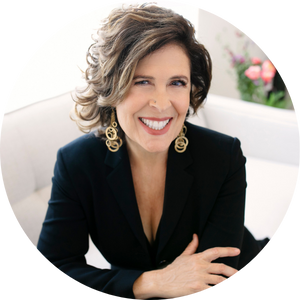
Like what you read? Share it!
WE THOUGHT YOU’D ALSO LIKE THESE EPISODES


